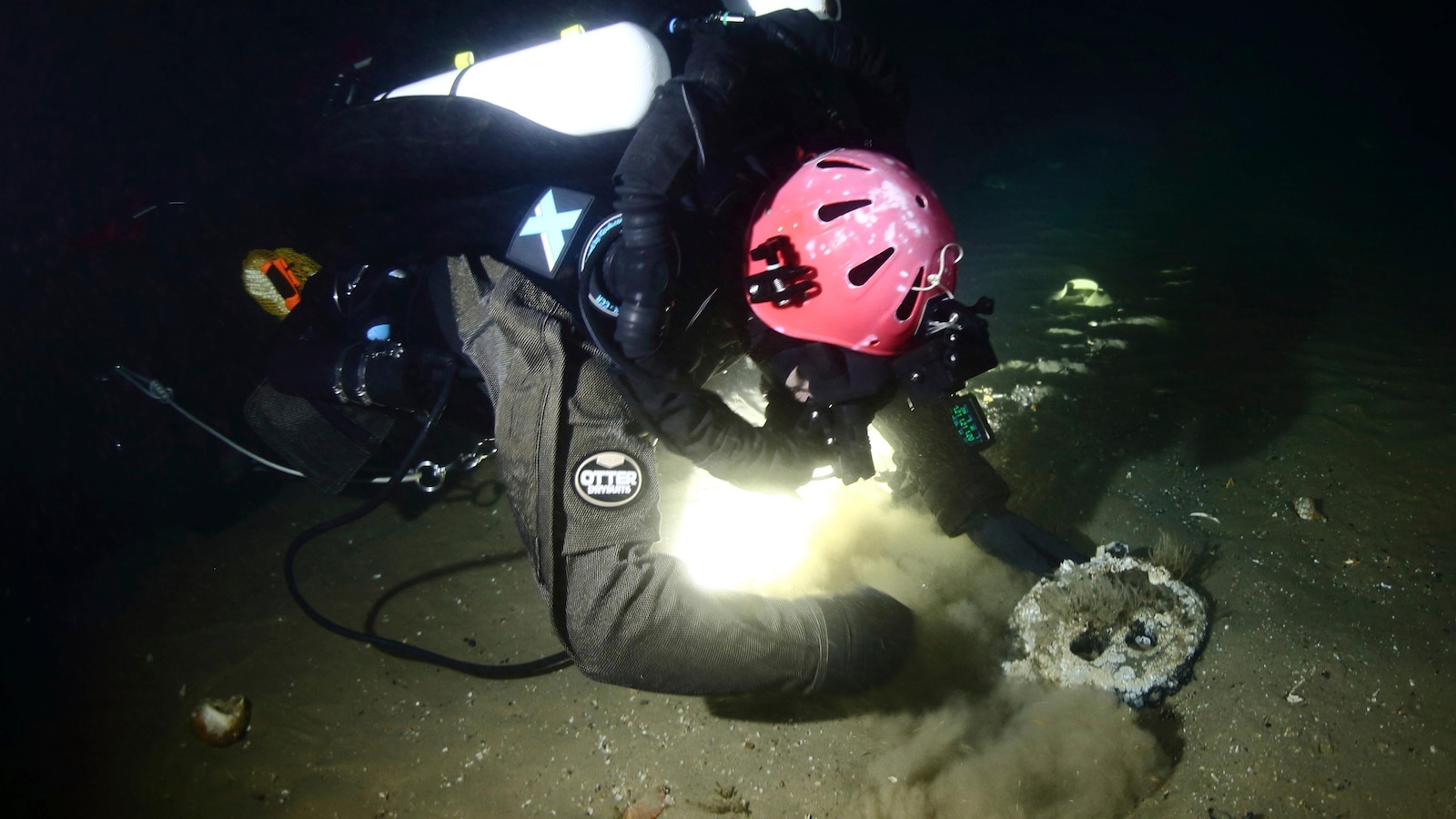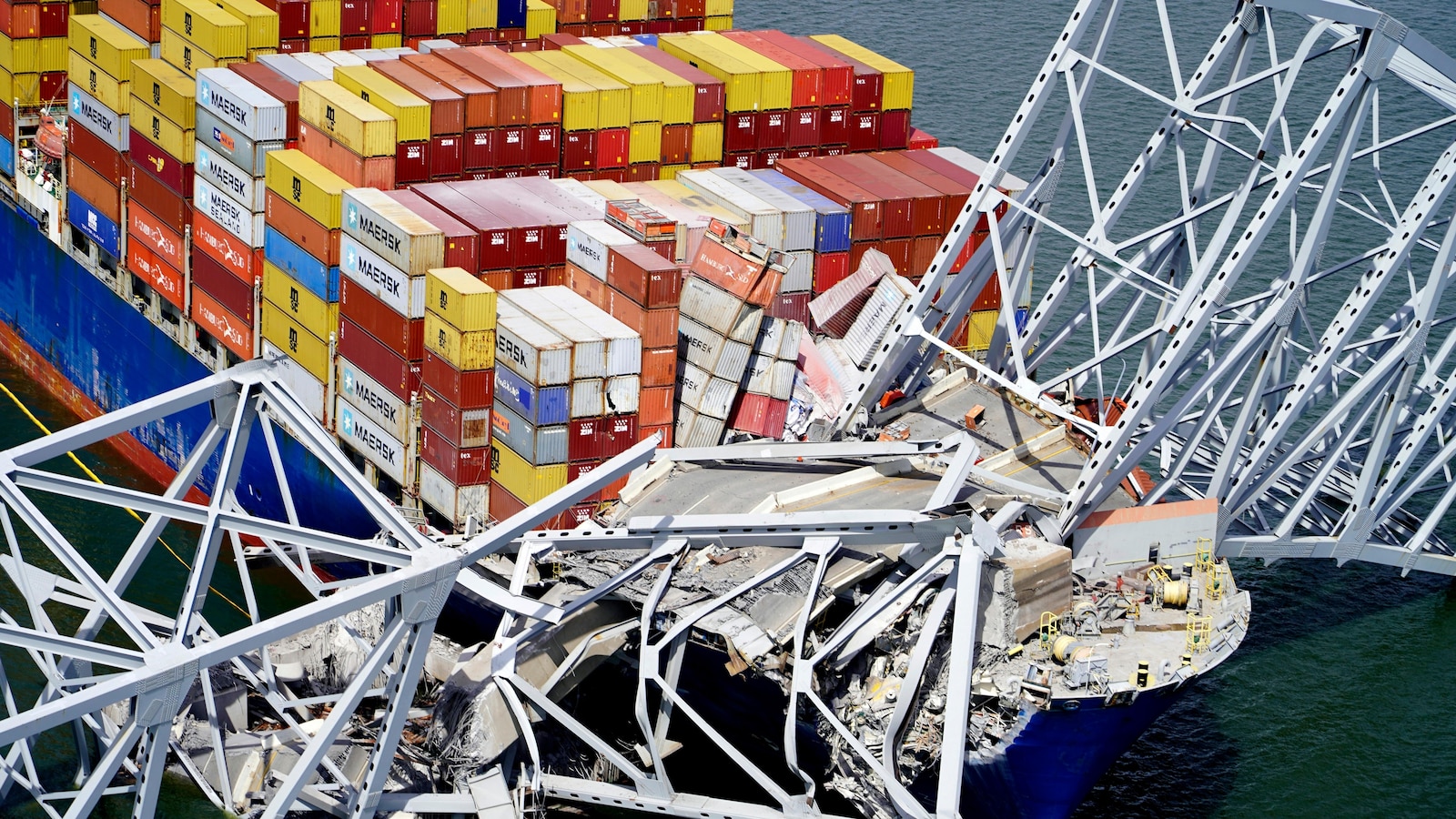
PORTLAND, Maine — The French steamship Le Lyonnais, a marvel for its time, was feared lost forever when a maritime disaster in 1856 sent her to the bottom of the ocean off Massachusetts.
Generations later, a marine salvage crew is ready to write the next chapter in the history of the passenger liner, which was built as the Age of Sail was yielding to steamships. New Jersey marine salvage firm Atlantic Wreck Salvage found the wreck of Le Lyonnais about 200 miles (322 kilometers) off New Bedford, Massachusetts, in late August.
The discovery of the steamship follows years of work to locate it and also represents a new beginning, said Jennifer Sellitti, a spokesperson for Atlantic Wreck Salvage and a crew member on D/V Tenacious, the vessel the company uses for dives and salvages. The next steps are to document the wreck site, map it and determine what artifacts can be brought to the surface, Sellitti said.
“Finding it in some ways is closure, in some ways is the end. In some ways it’s the beginning — documenting it, determining what is down there and what should be brought up,” Sellitti said. “This was a very early example of a steam engine.”
Le Lyonnais was about 260 feet (79 meters) in length and tasked with carrying passengers and cargo between New York and France, Sellitti said. The ship had sails but was also outfitted with a horizontal steam engine and an iron hull, making her an example of how innovation changed shipping in the mid-19th century.
But disaster struck during the ship’s first return voyage back to the French city of Le Havre from the U.S. The ship collided with the Maine-built barque Adriatic, which was en route from Belfast, Maine, to Savannah, Georgia, according to Atlantic Wreck Salvage’s research, which Sellitti is using as the basis for a book on the ship called “The Adriatic Affair.”
The collision left Le Lyonnais bearing a hole in the hull that would eventually sink the boat. Of the 132 passengers and crew, 114 died. The Adriatic made it back to New England for repairs.
The salvage crew found Le Lyonnais by doing historical research and using sonar to narrow down the site of its final resting place. The ship is likely too deteriorated to be raised, Sellitti said.
However, the historic nature of the ship makes its discovery significant, said Eric Takajian, a member of the crew that found the Le Lyonnais.
“Being one of the first French passenger steamships to have a regularly scheduled run crossing the Atlantic and an early transitional steamship make Le Lyonnais’ discovery significant,” he said.
In a remarkable discovery, a team of marine archaeologists has located the sunken remains of a French steamship that sank off the coast of New England in 1856. The vessel, known as the SS City of Boston, was a luxurious passenger ship that was en route from Liverpool to Boston when it encountered a severe storm and ultimately met its tragic fate.
The SS City of Boston was a state-of-the-art steamship at the time, equipped with the latest technology and amenities for its passengers. It was considered one of the fastest and most luxurious ships of its time, making regular transatlantic voyages between Europe and the United States.
However, on a fateful night in 1856, the ship ran into a powerful storm off the coast of New England. The crew struggled to navigate the treacherous waters, but ultimately the ship succumbed to the force of the storm and sank to the ocean floor. The exact cause of the sinking remains unknown, but it is believed that a combination of heavy winds and rough seas played a significant role.
For over a century, the wreckage of the SS City of Boston remained hidden beneath the waters off the coast of New England, its story largely forgotten. However, in recent years, advances in technology and underwater exploration have allowed researchers to locate and identify the sunken ship.
Using sonar imaging and remotely operated vehicles, the team of marine archaeologists was able to pinpoint the exact location of the wreckage and confirm that it was indeed the SS City of Boston. The discovery has provided valuable insights into the history of maritime travel in the 19th century and shed light on the tragic fate of the passengers and crew aboard the ill-fated steamship.
The sunken remains of the SS City of Boston serve as a poignant reminder of the dangers that early seafarers faced when crossing the Atlantic Ocean. The discovery has sparked renewed interest in maritime archaeology and has opened up new avenues for research into the history of transatlantic travel.
As researchers continue to explore the wreckage of the SS City of Boston, they hope to uncover more clues about the circumstances surrounding its sinking and gain a better understanding of this important chapter in maritime history. The discovery of this sunken French steamship is a testament to the enduring allure of underwater exploration and the mysteries that lie beneath the surface of our oceans.


